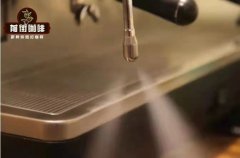The difference of the influence of the Green Standard of pre-Qingming Tea and Summer picking Tea on the Taste of Tea production
Pick
As we mentioned, the taste begins in the field. Scientists have identified more than 600 flavors and flavors in tea, many of which have vague and beautiful names, such as "linalool" and "hexanol". Miraculously, tea makers can make hundreds of flavors with just six compounds in tea trees: pigments, sugars, amino acids, fatty acids, caffeine and polyphenols. These compounds are present in nature to nourish and protect plants from attack. The attractive aroma and taste we find in tea actually prevent aphids, leafhoppers and other insects from eating tea. In essence, tea makers disguise themselves as insects, stimulate them to defend themselves by destroying the leaves, and make them delicious in the process.
The first secret of tasting tea is to pick tea at its peak, when the proportion of these compounds in tea is the most coveted. With the exception of tropical teas from Assam and Ceylon, the best teas peak in spring. [our blog about the tea season will give you a deeper understanding of this topic]
Like all plants, tea plants grow through photosynthesis. Pigments chlorophyll and carotene absorb sunlight, enabling plants to convert carbon dioxide and water into glucose and other sugars. When the sun sets in winter, shrubs go dormant and store nutrients in their roots. As winter dormancy ends and temperatures get warmer, plants absorb these nutrients to create more leaves. This plant makes amino acids to make proteins. It produces caffeine and polyphenols to repel insects and protect plants from attack. These two chemicals seem to confuse herbivores and stop them from eating leaves.
For tea connoisseurs, caffeine and polyphenols affect the taste of tea along with sugars, amino acids and fatty acids. Obviously, sugar sweetens the tea. Fatty acids give tea a lot of aroma. Amino acids affect the body, making tea relatively fleshy or delicious. In particular, an amino acid called "l-theanine" ("theanine" for short) seems to be the most mouth-watering. Japanese tea makers often mention the theanine content in their best teas. Theanine has also been increasingly studied for its ability to soothe the brain and improve attention, making tea a milder stimulant than coffee. Caffeine, an alkaloid, gives tea a slight bitter taste. Tea polyphenols give tea tannin quality, relative astringency or refreshing taste. Two of them are particularly potent: EGCG, or epigallocatechin-3-gallate, a smooth-tasting polyphenol, and EC, or epicatechin, a rougher molecule that tastes like grass. Spring teas are particularly round and mellow because they contain the most EGCG and the least EC. Spring tea has different names in different countries: Qingming tea in China, fried tea in Japan, spring tea in Darjeeling.

In summer, plants slow down and dig deep to get heat and late-season insect attacks. Japanese wild primroses picked in May and June taste more grassy and slender than wild primroses in early spring because they have about 1/3 less amino acids and a much higher ratio of EC to EGCG. The glucose and amino acid contents of the second red tide Darjeeling Tea and oolong tea in the late season such as Bai Hao are much lower than those in the early season. The makers of both teas allow insects to attack them before harvest to make up for nutritional losses. The plant reacts by producing a defensive compound with the fruity aroma of musk grapes.
To ensure the greatest taste, tea manufacturers have also developed a dazzling variety of tea, each containing six chemicals to varying degrees. By crossing Camellia with Assam Camellia, tea makers have bred hundreds of varieties. The exquisite Chinese variety Dabai (Dabai Tea) can produce oversized buds rich in glucose, which is very suitable for white tea and sharp black tea. The Japanese variety yabukita is grown in 90 per cent of the country's tea gardens because it contains higher-than-average amino acids and relatively low polyphenols. The chocolate flavor of Chinese Keemun black tea and Sri Lankan New Vithanakande black tea comes partly from varieties containing extra amino acids.
After selecting tea varieties and harvest time, tea makers can also control the level of compounds in tea by collecting tea by hand, so as to control the taste of tea. The best tea also comes from the youngest leaves. Tea trees grow by sending out buds-the initial leaves are shaped like spears, spread out into tender leaves, and then mature. The most tender leaf on a plant is called "leaflet set", which consists of a bud and two adjacent leaves. These leafy plants are rich in nutrients and provide them with nutrition and protection during seedling growth. Fully mature leaves contain relatively few nutrients because they transport photosynthetic substances to the roots for storage. Mechanical harvesters cannot distinguish between leaves and mature leaves; like rough hedge pruners, they just trim the outer layer of bushes. As a result, tea harvested by machines is often insipid in taste. Manual harvest is a meticulous work. Reapers usually wear gloves with razor blades, cut off one leaf at a time, fly their fingers from branch to branch in the bushes, and gently put the cut leaves in straw baskets as they work.
Important Notice :
前街咖啡 FrontStreet Coffee has moved to new addredd:
FrontStreet Coffee Address: 315,Donghua East Road,GuangZhou
Tel:020 38364473
- Prev

Comparison of planting environment of small-leaf tea in China and big-leaf tea in Assam, India
Although the growth of tea from bitter waxy leaves on shrubs to tea in pots seems to be absurd, tea makers actually followed the basic steps invented by Chinese farmers in the 18th century. Tea is part of the genus Camellia. There are three main varieties used to produce tea: Chinese lobular tea (sinensis), Assam tea (assamica) and Cambodian tea (cambodi)
- Next

Barista skill of the milk foam how to deal with, milk foam what skills and should pay attention to.
The dispensing of milk foam is a very important step in making a good latte. Novice baristas are easy to beat the milk very thick if they are not careful. How on earth can they dispose of a good bottle of milk foam? what affects the stability of milk bubbles is the casein colloidal particles in milk protein and the presence of whey protein casein colloidal particles to form tension on the milk surface, which is formed when steam hits the milk surface.
Related
- Beginners will see the "Coffee pull flower" guide!
- What is the difference between ice blog purified milk and ordinary milk coffee?
- Why is the Philippines the largest producer of crops in Liberia?
- For coffee extraction, should the fine powder be retained?
- How does extracted espresso fill pressed powder? How much strength does it take to press the powder?
- How to make jasmine cold extract coffee? Is the jasmine + latte good?
- Will this little toy really make the coffee taste better? How does Lily Drip affect coffee extraction?
- Will the action of slapping the filter cup also affect coffee extraction?
- What's the difference between powder-to-water ratio and powder-to-liquid ratio?
- What is the Ethiopian local species? What does it have to do with Heirloom native species?

